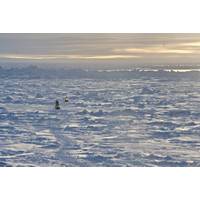
The Arctic: Scientists Aim to Improve Sea Ice Predictions' Accuracy, Access
gap between sea ice forecasting and stakeholder needs.”Bhatt’s AGU presentation is here.This chart shows distribution of the 36 sea ice outlook contributions for September estimates of the September 2021 monthly mean Arctic sea ice extent. Chart courtesy of Matthew Fisher, U.S. National Snow and Ice Data Center
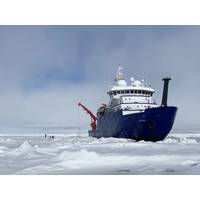
UAF’s GINA Provides a Guiding Hand in Arctic Ocean Research
Seth Danielson, chief scientistEyes in the SkyNavigating sea ice is a burgeoning field of interest as shipping increases in the Arctic, which is becoming increasingly open though not entirely ice-free. Icebergs from coastal sources still bob along, and thick slabs of sea ice still drift.The National Snow and Ice Data Center notes that satellites have only been continuously monitoring sea ice since 1979. Prior to that, captains had to rely on their crews’ firsthand observations and on weekly ice charts based on airborne observations and reports from observers on the coasts and other ships.Avoiding
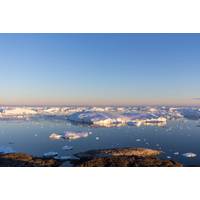
Arctic Warming Cascades Through Ocean and Over Land
;the day of the smallest extent of the year—compared to the median extent (gold line) reached on this date in Septembers from 1981 to 2010. (bottom) Annual maximum (dark blue) and minimum (light blue) ice extents from 1979 to 2020. Credit: NOAA Climate.gov, based on data from the National Snow and Ice Data Center and the 2020 Arctic Report Card."When the report card started 15 years ago, I wrote about how low it was then. But I’d trade that low for what we're seeing now any day," said co-author Donald Perovich, a sea ice geophysicist at Dartmouth University. The September
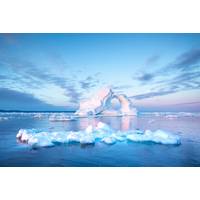
Arctic Sea Ice Lows Mark a New Polar Climate Regime
square kilometers – reached in September 2012 after a late-season cyclonic storm broke up the remaining ice – is not much below what we see today.“We haven’t gone back at all to anything from 30 to 40 years ago,” said climatologist Julienne Stroeve at the National Snow and Ice Data Center in Boulder, Colorado. And as climate change continues, scientists say the sea ice is unlikely to recover to past levels.In fact, the long-frozen region is already shifting to an entirely new climate regime, marked by the escalating trends in ice melt, temperature rise and rainfall days
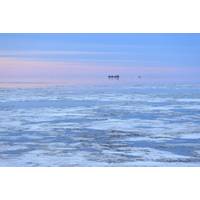
Winter Sea Ice in Bering Sea Reached Lowest Levels in Millennia
in the region, as ice is replaced by patches of dark water that absorb solar radiation rather than reflecting it back out of the atmsophere."Obviously, if we lose the sea ice you are completely changing the temperatures of the Arctic," said Julienne Stroeve, a climatologist with National Snow and Ice Data Center at the University of Boulder Colorado not involved in the study. "If you lose it all, you're going to warm up the region even faster."Air temperature wasn't the only factor found to be affecting sea ice, though. Shifts in ocean and atmospheric circulation linked to
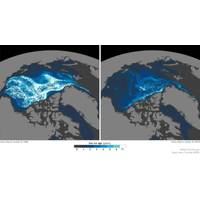
Old Sea Ice is Disappearing from the Arctic Ocean
that's a good time to measure multiyear versus first-year ice.In the ninth week of 1984, multiyear ice comprised 61 percent of the Arctic sea ice pack. In the ninth week of 2018, multiyear ice comprised 34 percent of the sea ice pack. In its Arctic Sea Ice News and Analysis blog, the National Snow and Ice Data Center (NSIDC) reported that only 2 percent of the Arctic's sea ice was at least five years old. That is the lowest percentage of such old ice during wintertime in the satellite record.These maps show multiyear and first-year ice in the ninth week of 1984 (left) and 2018 (right). Land
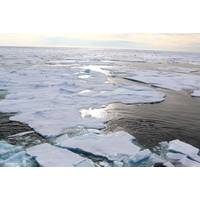
Arctic Ice Sets New Record Low for Winter
winter polar darkness and shrinks to the smallest of the year in September, at the end of the brief Arctic summer. Arctic sea ice appears to have reached its annual maximum extent on March 7, the lowest maximum in the 38-year satellite record, according to the Colorado-based U.S. National Snow and Ice Data Center. On that date, the ice covered 14.42 million square kilometres (5.57 million square miles),97,000 square kilometres below the previous lowest maximum that occurred on Feb. 25, 2015. The trend of shrinking ice around the North Pole in recent decades has been one of
The Big Melt in World Ocean Ice Record
Sea ice extent in both the northern and southern hemisphere was at record low levels for the month of January 2017. Last month set a record for the lowest sea-ice extent for the month, falling below the record set last year, according to the National Snow and Ice Data Center (NSIDC), a Colorado-based research outfit. Arctic sea ice this January averaged 5.17 million square miles, the lowest for the month in the 38-year sea ice record. "Greenhouse gases emitted through human activities and the resulting increase in global mean temperatures are the most

Polar Sea Ice the Size of India Vanishes in Record Heat
and to which a build-up of man-made greenhouse gases, an El Nino weather event that this year unlocked heat from the Pacific Ocean and freak natural swings may all be contributing. "There are some really crazy things going on," said Mark Serreze, director of the U.S. National Snow and Ice Data Center (NSIDC) in Boulder, Colorado, saying temperatures in parts of the Arctic were 20 degrees Celsius (36°F) above normal some days in November. Worldwide, this year is on track to be the warmest on record. Combined, the extent of polar sea ice on Dec. 4 was about 3


 February 2024
February 2024





